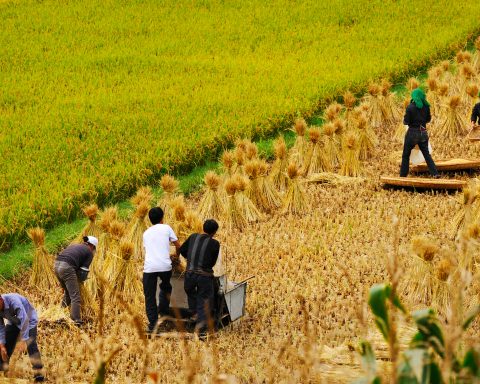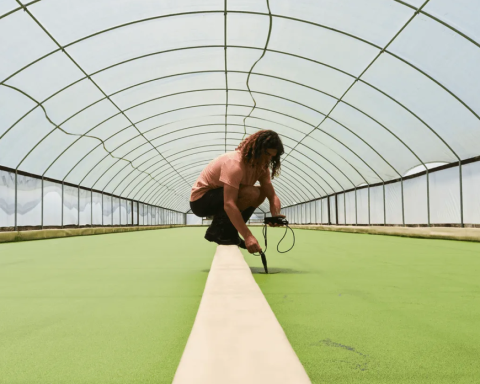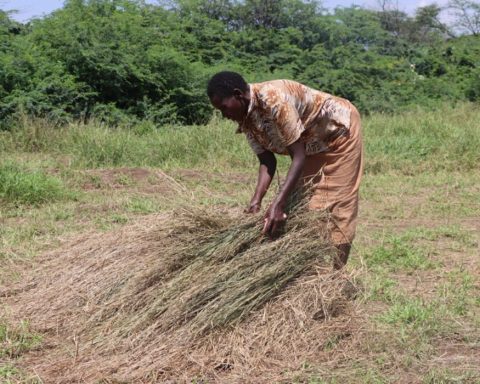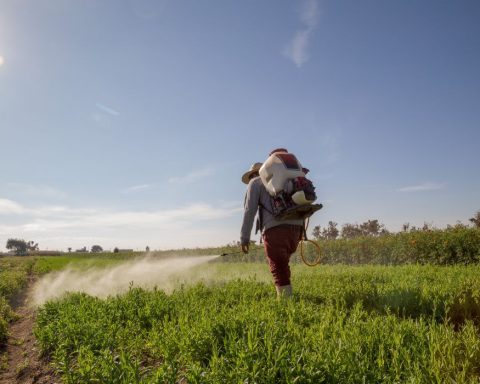Product recalls, a major factory closure and supply chain disruptions have wreaked havoc on North America’s baby formula market over the last year.
The effects of the temporary closure of a troubled Similac supply factory in Michigan in early 2022 continued to be felt late in the year, as the U.S. Food and Drug Administration (FDA) announced a plan to enhance its surveillance of infant formula for a harmful bacteria called Cronobacter.
Experts say the concentration of 90% of the U.S. baby formula market in the hands of just three companies – Abbott, Reckitt Benckiser and now Perrigo (which bought Nestlé’s formula division) – is a major weakness of the industry. But while dairy-based-formula manufacturers and consumers face ongoing supply chain challenges, a novel product is gaining momentum.
Much like lab-grown meat and dairy, cell-cultured human milk is produced in a laboratory without the use of the traditional source, in this case lactating humans. The process for reproducing human milk varies from company to company but generally involves culturing milk-producing mammary epithelial cells obtained from donated breast milk and tissue.
While a lab-grown chicken product was just deemed safe for human consumption by the FDA in late November, cell-cultured human milk has yet to receive regulatory approval anywhere in the world. Regardless, investors and researchers at half a dozen companies are hoping to disrupt the heavily monopolized dairy-based-formula market and say their innovative products have the potential to offer parents another supplementary option when breastfeeding isn’t possible or is not enough.
Michelle Egger, the co-founder and CEO of North Carolina–based Biomilq, says North America’s formula shortage raised a lot of questions about the industry. “It’s a great time, as a disrupter, to be a part of those conversations,” she says.
Biomilq is doing much more than conversing. In 2020, the female-led start-up raised US$3.5 million in series A funding from Bill Gates’s Breakthrough Energy, an investment firm focused on climate solutions. By October 2021, the company closed the funding round with US$21 million from Breakthrough and others, including Europe’s first all-female-led fund, Green Generation Fund.
Curbing the carbon footprint of formula market
Interest from sustainability-minded investors stems from the potential for lab-grown breast milk to “alleviate the climate impacts of bovine-based infant formula,” as Green Generation Fund puts it. Dairy production comes with a hefty environmental footprint. According to the UN Food and Agriculture Organization, milk production alone contributes 2.9% of all human-induced greenhouse gas emissions. One study that focused on the emissions of powdered formula specifically, published in the journal Breastfeeding Medicine, found that in 2016, sales of powdered baby formula were responsible for 70,256 tons of carbon dioxide equivalent (CO2e) in Canada, 435,820 tons in Mexico and 655,956 tons in the U.S. That equates to more than 1.16 million tons of CO2e, which is more than the amount emitted by cars and trucks driving through Manhattan in a year.
“There are so many households and families trying to reduce their carbon footprint and tackling it in any way they can, but there aren’t great options when breastfeeding isn’t working for you,” says Egger.
The company estimates that Biomilq could displace approximately 20 million megatons of CO2e annually by 2028 based on current technological capabilities and assumptions for market capture.
Ultimately, the degree of emissions displaced will depend largely on the efficiency of Biomilq’s commercial manufacturing process, which is still being developed.
Breast is best. Is lab-grown second best?
The sustainability factor of lab-grown breast milk is for Egger “the cherry on top” of a product that she maintains is also nutritionally superior to conventional formula. She notes that while dairy-based infant formulas can provide all the essential macronutrients that an infant needs, “studies show that conventional formulas fall short of providing the full constellation of components that make breast milk so extraordinary.”
Biomilq co-founder Leila Strickland, a cellular biologist who herself struggled with breastfeeding, told The Guardian that compared to dairy-based formula, Biomilq’s product more closely matches breast milk’s proportions of protein, fats and carbohydrates. However, the company doesn’t claim that its product will mimic all the advantages of breast milk, including certain hormones, healthy bacteria and antibodies. “That’s a part of breast milk we won’t be able to replicate,” she said.
For those families looking to soy-based formula as a means to cut their eco-impact, Egger notes that soy, along with dairy, is one of the most common childhood allergies. “Our product will not be soy- or dairy-based, cutting down on allergen exposure while providing another choice, more similar to breast milk, in order to meet infant nutritional needs.”
Global race for winning formula
Across the globe, Israel’s Wilk, a publicly traded company on the Tel Aviv Stock Exchange, is also banking on the sustainability of cell-cultured milk and is developing both human and animal-based products.
In operation since 2020, Wilk holds patents on laboratory production processes “that replicate the milk-producing cells of humans and other mammals to create 100% real milk and milk components in laboratory settings,” according to a statement.
In 2021, Wilk banked US$2 million from Coca-Cola Israel (operating as The Central Bottling Company) to develop lab-cultured milk products. This past November, the company announced that it had developed what it said was the “world’s first yogurt developed with cell-cultured milk fat from cows along with other plant-based components.” The technology will also help the company develop cell-cultured human milk fat for infant formula and replace the vegetable fats in baby formulas.
There are so many families trying to reduce their carbon footprint and tackling it in any way they can, but there aren’t great options when breastfeeding isn’t working for you.
-Michelle Egger, co-founder and CEO, Biomilq
In June, Wilk announced it had successfully produced the breast-milk protein lactoferrin in its lab. “This breakthrough brings us one step closer to our goal of providing all infants with the full range of nutritional benefits that can only be found in breast milk,” Wilk CEO Tomer Aizen said in a press release.
There are at least two other companies attempting to enter the lab-grown breast milk space, including New York–based Helaina, which has raised US$24.6 million in funding to date. Rather than working with donated milk and tissue, Helaina says that it’s programming yeast to ferment into breast milk proteins.
Due date up in the air
The question of when and if cell-based human milk will be available to consumers remains unclear. “We are positioned to be able to be successful and to move forward, but there is a lot out of our control,” Egger says. “We took an incredibly challenging technology basis and applied it to one of the hardest problems we face as human beings; it is unsurprising that it is not for the faint of heart.”
For now, Egger and her team are building consumer trust. “There is a lot of education, discussion and collaboration that has to happen … We know, frankly, that a novel production method for a product that is for infants and toddlers is challenging for a lot of people; our technology sounds a little bit like pigs flying.”
If all goes well, within three to five years, lab-grown breast milk could offer a new option for parents and caregivers looking to avoid dairy-based formulas, whether for environmental, animal welfare or allergy-related reasons. Breast milk will always be best, but for struggling mothers, lab-cultured breast milk might eventually become a close second.







